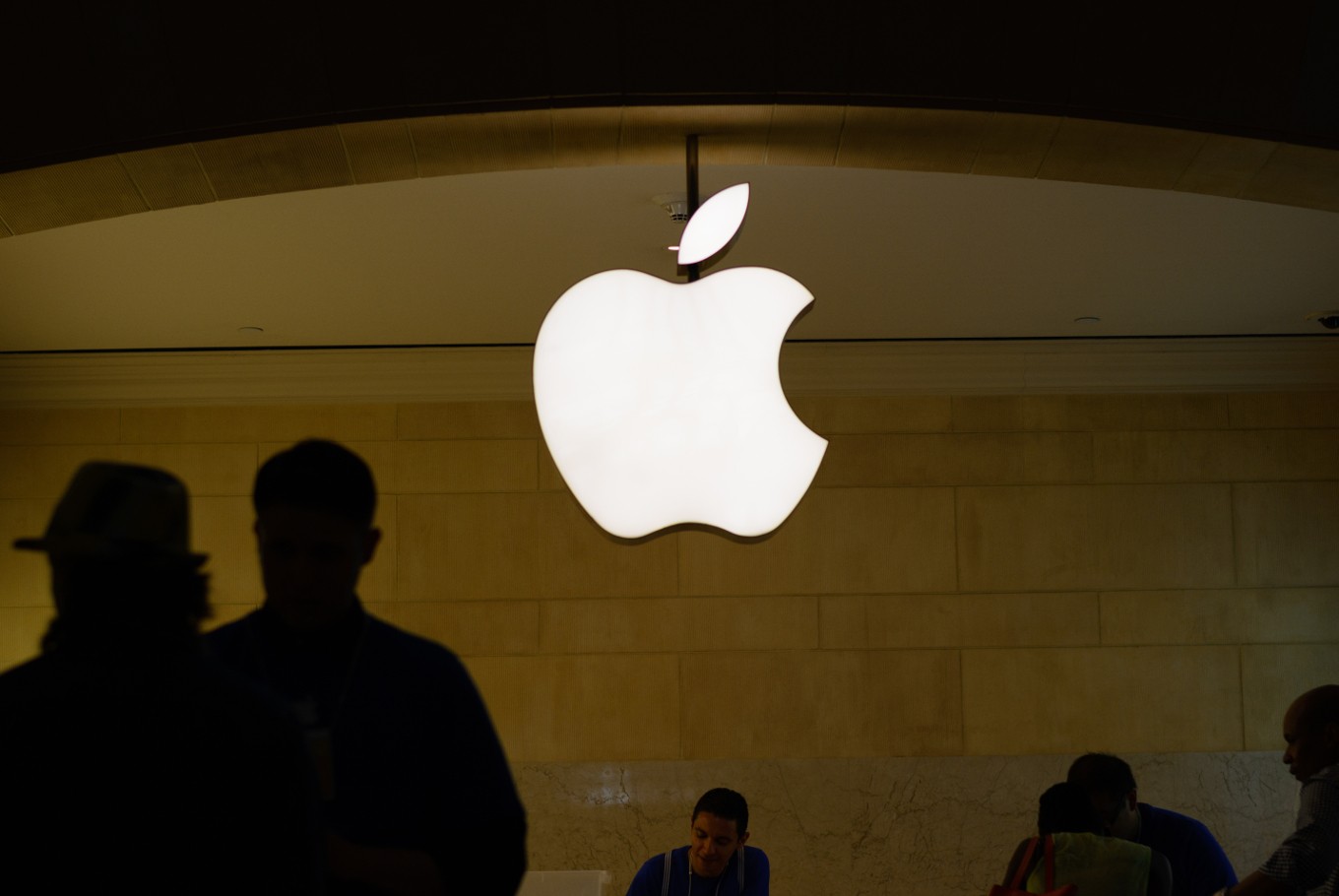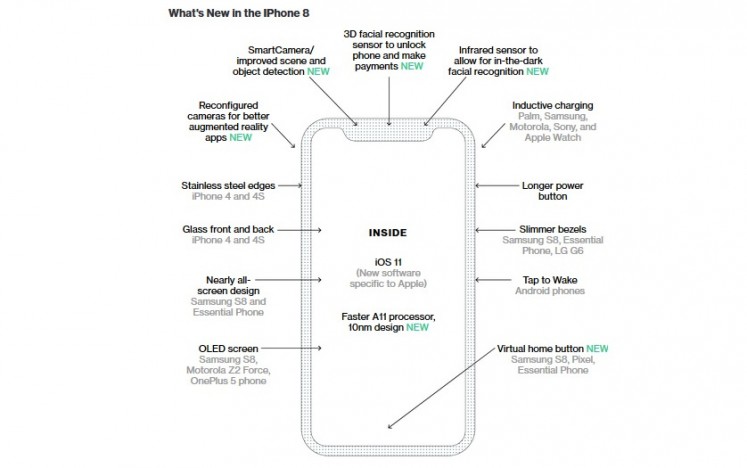Popular Reads
Top Results
Can't find what you're looking for?
View all search resultsPopular Reads
Top Results
Can't find what you're looking for?
View all search resultsWhat’s new in the iPhone 8
As previously reported by Bloomberg, Apple plans to release three new phones: successors to the iPhone 7 and iPhone 7 Plus as well as a new, revamped model that sits at the high-end. All will have the usual upgrades like faster processors, but the revamped model is where Apple will flex its best, not first, muscles, as well as some features that haven’t been tried before.
Change text size
Gift Premium Articles
to Anyone
In June, Apple Inc.’s Chief Executive Officer Tim Cook told Bloomberg: “We don’t feel an impatience to be first. It’s just not how we’re wired. Our thing is to be the best and to give the user something that really makes a difference in their lives.” He was talking about the unveiling of the HomePod, Apple’s late entrance to the smart speaker market pioneered by Amazon. But Cook could just as well have been talking about the next iPhone.
Due out this fall, the new smartphone arrives with lofty expectations. After all, this is the 10th anniversary of the original iPhone, a gadget that upended the industry and created an ecosystem of apps and accessories. However, the new iPhone won’t be a case-study of innovation, more a matter of perfecting features that are already out there in rival devices. Time and again, Apple has followed this “best, not first” philosophy, seizing on technologies and features bungled by rivals and implementing them well enough to spur widespread adoption. Proof of concept? More than 1.2 billion iPhones sold in the last decade.
Of course, plenty of other companies have employed the follow-and-perfect model. To cite one recent example, Facebook has debuted several photo features invented by social-media upstart Snap. But arguably no one does this better than Apple. The next iPhone will seamlessly mesh screen and charging technologies invented by others with such Apple innovations as a 3-D face scanner that unlocks the phone in a few hundred milliseconds. Apple declined to comment.
As previously reported by Bloomberg, Apple plans to release three new phones: successors to the iPhone 7 and iPhone 7 Plus as well as a new, revamped model that sits at the high-end. All will have the usual upgrades like faster processors, but the revamped model is where Apple will flex its best, not first, muscles, as well as some features that haven’t been tried before.
Read also: Google launches newest Android named 'Oreo'
The next iPhone will seamlessly mesh screen and charging technologies invented by others with such Apple innovations as a 3-D face scanner that unlocks the phone in a few hundred milliseconds. Apple declined to comment. (Bloomberg/File)The two most noticeable involve the screen. The display will use a technology called OLED, which makes for better color reproduction and deeper blacks and whites. The screen will also take up nearly the entire front of the phone, save for thinner bezels and a notch at the top of the front to fit in the camera and new sensors. OLED screens have been the core of Samsung’s devices for the past few years, while the nearly all-screen front with no home button design was popularized by Samsung’s S8 and also appears in the Essential Phone Android co-founder Andy Rubin debuted last week.
Other likely new features, spotlighted by code strings inside of an accidently released software package for the upcoming HomePod, include the ability to tap the phone’s screen to wake it up and inductive charging. The tap to wake feature has been available on Android phones for several years, while inductive charging first made its appearance in consumer handsets with the Palm Pre launch in 2009. Apple first entered those waters with the Apple Watch charger in 2015.
Apple is bringing some new ideas to the table. To replace the home button, the company is creating a software-based controls area at the bottom of the phone, which could be a step up from the basic controls on home button-less Android phones. Like the iPhone 7 Plus, the new device will feature two rear cameras, but now they’ll sit one atop the other rather than side by side, a configuration that could make augmented reality apps work better. This iPhone upgrade will also mark the first time that a smartphone maker’s complete lineup will use the same, more efficient 10nm processor (Samsung’s S8 features two different types of that chip depending on where you buy it). Upgrades to core technologies aside, the new iPhone’s crown jewel will be a 3-D facial scanning sensor that will unlock device and authenticate purchases—an industry first.
If history is any guide, the new iPhone will be a huge hit. Millions are already locked into the Apple ecosystem and trust the company to deliver its signature performance and elegance—even if some of features have been around for years.












